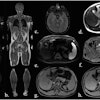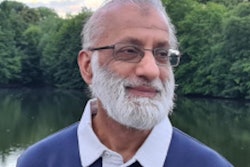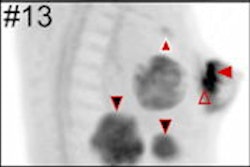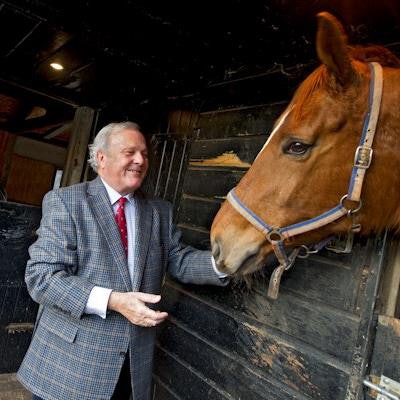
Tributes have been posted to the widely respected radiologist, equestrian rider, and historian Dr. Kees Vellenga, PhD. In addition to a long career in radiology, he represented the Netherlands at the 1972 Olympic Games and was national dressage champion.
According to an obituary posted by the Dutch newspaper, Volkskrant, "Kees Vellenga had two great loves in his life: radiology and equestrian sport. And Jolien of course, his wife with whom he moved from Leiden to Almelo in the late 1970s.
"In the east of the country, he was able to get a job as a radiologist in the hospital and buy a house with an adjacent plot of land for the horses. Two birds with one stone," the article stated.
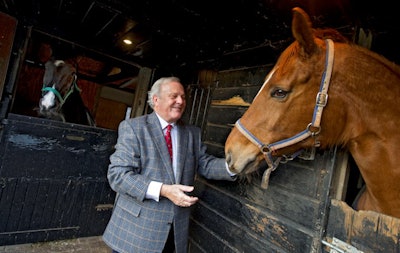 Kees Vellenga had a deep love of horses. Photo courtesy of Foto Tubantia
Kees Vellenga had a deep love of horses. Photo courtesy of Foto TubantiaKees' father was a radiologist at the Havenziekenhuis in Rotterdam, while his mother was a talented rider and later head of dressage selection for the Olympic Games in Los Angeles (1984) and Seoul (1988). He himself became Dutch dressage champion in 1968, and then he was a member of the dressage team that finished seventh at the 1972 Munich Games, during which members of a Palestinian terrorist group took 11 Israelis hostage in the Olympic Village.
"That's all everyone remembers, not that the Netherlands' equestrian team was finally back at the Games after 40 years," he wrote in his self-published biography, A Life in Radiology and Equestrian Sports.
After retiring from competitive sports in 2000, Kees continued as a judge at international competitions. "Actually, my father liked animals more than people," his daughter Elzelien told Volkskrant. "He was very natural and easygoing with them. Sometimes, when he was busy, he might forget whether he had a human or an animal in front of him."
A life in radiology
He was an "esteemed radiologist, loyal friend, and valuable editor," noted Dr. Paul Algra and Dr. Martijn Meijerink in a joint editorial in the 25 March 2022 issue of MemoRad, the magazine of the Dutch Society of Radiology (NVvR).
"Kees was almost always present at editorial meetings and came up with important ideas. He produced more text than any of us, resulting in over 100 articles in MemoRad -- often about the history of radiology but also about his many travels and observations," they wrote.
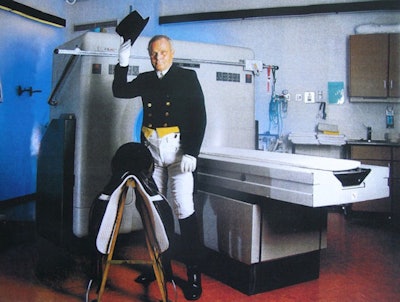 Vellenga's life-long passion for radiology and equestrian sports was legendary. Image courtesy of MedischContact.
Vellenga's life-long passion for radiology and equestrian sports was legendary. Image courtesy of MedischContact.Vellenga can be described as versatile and special, but this seems insufficient to do justice to the extraordinary efforts that Kees and Jolien made together, according to radiologist Dr. Lucas Kingma and Frans W. Zonneveld, PhD, emeritus professor at the University of Utrecht and secretary of the NVvR history section.
"They formed a social center through and through, a duo in the optimal sense of the word. Always together. Jolien, always next to Kees," said Kingma and Zonneveld, whose own tribute to Vellenga is due to appear in the next edition of MemoRad.
In addition to radiology, he developed a keen interest in nuclear medicine. His doctoral research focused on the investigation of Paget's disease with bone scintigraphy. On 24 November 1982 he obtained his doctorate at Leiden, supported by Prof. O.L.M. Bijvoet and Dr. E.K.J. Pauwels.
"His commitment was countless and immeasurable," Kingma and Zonneveld said, noting that Kees worked tirelessly at the Princess Irene Hospital, Streekziekenhuis Almelo, Twenteborg Hospital, and the Hospital Group Twente between 1978 and 2012.
Vellenga retired on 12 December 2012, and Jolien died on 30 January 2015 of heart failure. He continued to be involved in field observations in Suriname, South America, writing scientific articles and also chairing the NVvR's history section and attending meetings of the International Society for the History of Radiology (ISHRAD).
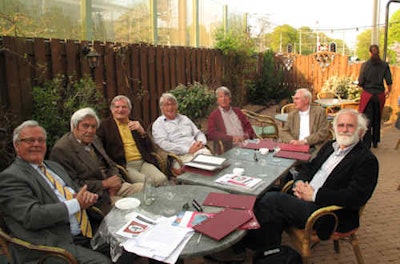 A meeting of the history committee of the Dutch Society of Radiology in August 2011, including Dr. Kees Vellenga, Dr. Carl Puylaert, Dr. Gerd Rosenbusch, Dr. Peter van Wiechen, Dr. Joris Panhuysen, Dr. Hans Vermeij, and Dr. Kees Simon.
A meeting of the history committee of the Dutch Society of Radiology in August 2011, including Dr. Kees Vellenga, Dr. Carl Puylaert, Dr. Gerd Rosenbusch, Dr. Peter van Wiechen, Dr. Joris Panhuysen, Dr. Hans Vermeij, and Dr. Kees Simon."The death of Jolien left deep marks on Kees, everything suddenly changed," they continued. "Kees could no longer bring himself to commit 100%. Being alone made that impossible for him. We thank Kees for his enormous commitment to our association over the past decades. He leaves a son, a daughter and five grandchildren."
Without Jolien, his thirst for life certainly faded a little, his daughter told Volkskrant.
Horse-drawn carriage at funeral
Vellenga's death came unexpectedly earlier this year.
"What initially appeared to be coronavirus developed into a pulmonary embolism," the report in Volkskrant noted. "He still showed the CT scan to his children from his hospital bed, as if it were not of himself but of a patient. "I think that was a way of not having to show his emotions," his daughter said."
A week after he received the diagnosis, Vellenga died on 19 January, at the age of 74. According to his last wishes, his coffin was transported to his final resting place in a carriage drawn by two black horses.



